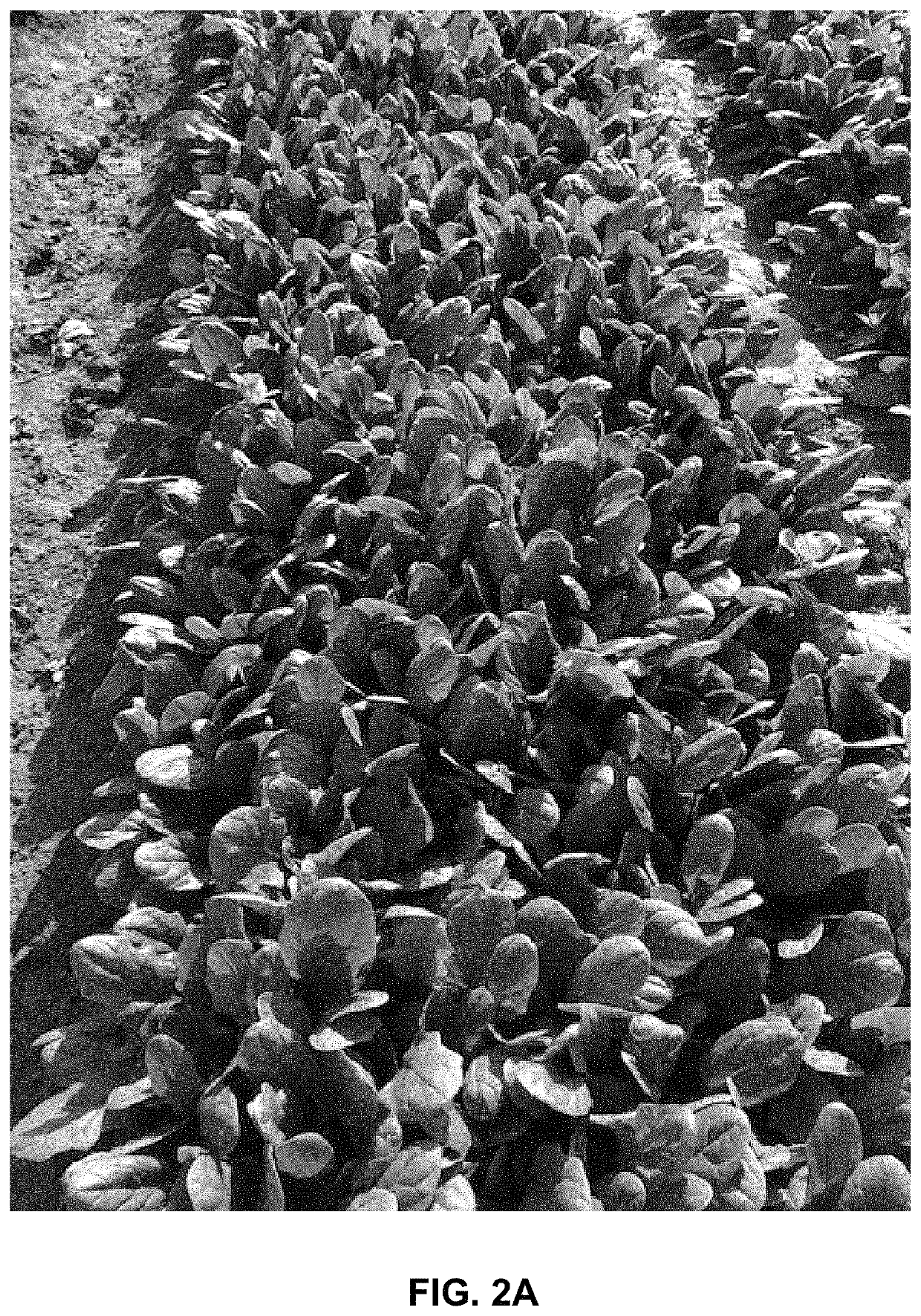Hybrid spinach ‘E03D.1051’
a hybrid and spinach technology, applied in the field of hybrid spinach 'e03d. 1051', can solve the problems of slow bolting, withering leaves, and inability to harvest marketable leaves,
- Summary
- Abstract
- Description
- Claims
- Application Information
AI Technical Summary
Benefits of technology
Problems solved by technology
Method used
Image
Examples
Embodiment Construction
[0034]There are numerous steps in the development of novel, desirable spinach germplasm. Plant breeding begins with the analysis of problems and weaknesses of current spinach germplasms, the establishment of program goals, and the definition of specific breeding objectives. The next step is selection of germplasm that possess the traits to meet the program goals. The goal is to combine in a single variety or hybrid an improved combination of desirable traits from the parental germplasm. These important traits may include greater yield, higher nutritional value, better growth rate and leaf properties, resistance to insect or pest, resistance to bacterial disease, fungal disease or viral disease, tolerance to drought and heat, and better agronomic quality.
[0035]Choice of breeding or selection methods can depend on the mode of plant reproduction, the heritability of the trait(s) being improved, and the type of variety used commercially (e.g., F1 hybrid variety, pureline variety, etc.)....
PUM
 Login to View More
Login to View More Abstract
Description
Claims
Application Information
 Login to View More
Login to View More - R&D
- Intellectual Property
- Life Sciences
- Materials
- Tech Scout
- Unparalleled Data Quality
- Higher Quality Content
- 60% Fewer Hallucinations
Browse by: Latest US Patents, China's latest patents, Technical Efficacy Thesaurus, Application Domain, Technology Topic, Popular Technical Reports.
© 2025 PatSnap. All rights reserved.Legal|Privacy policy|Modern Slavery Act Transparency Statement|Sitemap|About US| Contact US: help@patsnap.com



